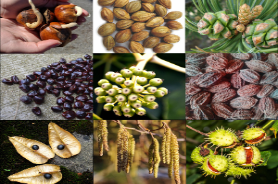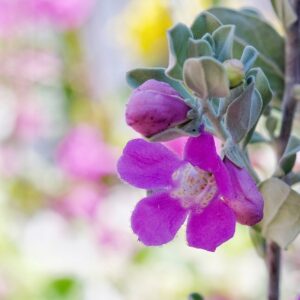Ribbon grass, scientifically known as Phalaris arundinacea, is a perennial ornamental grass that belongs to the Poaceae family. It is also commonly referred to as Reed Canary Grass or Gardener’s Garters. This grass is native to Europe, Asia, and North America and is widely cultivated for its attractive variegated foliage.
**Appearance**
Ribbon grass is known for its striking variegated leaves, which feature green and white stripes that run parallel to the length of the leaf blades. The leaves are long and narrow, reaching heights of around 2 to 3 feet (60 to 90 centimeters). The plant forms dense clumps, sending up numerous upright stems from a central crown.
**Growth Habit**
This grass has a vigorous growth habit and can spread rapidly through rhizomes, which are underground stems that produce new shoots and roots. It is considered a rhizomatous plant, making it suitable for use as ground cover or in naturalizing areas. However, its aggressive growth can also make it invasive in some regions, so it is important to monitor and contain its spread.
**Cultivation**
Ribbon grass is adaptable to a wide range of growing conditions. It thrives in full sun to partial shade and prefers moist to wet soils. It can tolerate a variety of soil types, including clay and sandy soils. Once established, it has good tolerance to drought, making it a resilient choice for gardens and landscapes.
**Uses**
Ribbon grass is commonly used in ornamental landscaping for its attractive foliage and clumping habit. It can be utilized as ground cover, border plantings, or as an accent in mixed perennial beds. It adds a striking visual element with its variegated leaves and creates a sense of movement with its upright growth.
**Maintenance**
While ribbon grass is generally low-maintenance, it may require some management to prevent its spread. Regular monitoring and containment through barriers or careful division can help control its growth. Additionally, removing any dead or damaged foliage and dividing clumps every few years can help maintain the plant’s vigor and prevent overcrowding.
**Caution**
It is important to note that ribbon grass can be invasive in certain regions and has the potential to outcompete native plants. Before planting, it is recommended to check with local authorities or extension services to ensure it is not considered an invasive species in your area.
**Conclusion**
Ribbon grass, with its striking variegated foliage and clumping growth habit, adds visual interest to landscapes and gardens. While it requires some management to control its spread, it provides a resilient and attractive option for ground cover or accent planting. With proper care, ribbon grass can bring a touch of elegance and movement to outdoor spaces.














Reviews
There are no reviews yet.